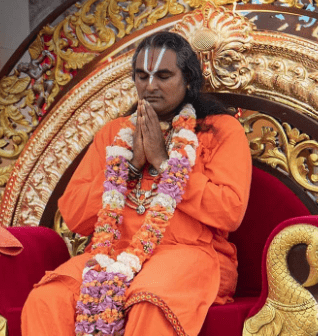‘Absorb your mind into study the life of saints, let yourself be inspired to transform yourself and become like them. Let all what is inside you start to reflect through you. Have that deep knowledge of bhakti itself. Study things that will promote the awakening of devotion in your heart, in your action.’ - Paramahamsa Vishwananda
How to Study Each Scripture
Start with the basics. While they may be differences in where to focus in each scripture, the basics for beginning are the same. Begin by understanding the narrative. Read it once just to understand what’s going on. You have to know the story before you can tease out the appropriate lessons. This will also help you gain appropriate context for the story as well.
Bhagavad Gita
In Bhakti Marga, the foundation of our path and philosophy is Paramahamsa Vishwananda with the supporting text of the Bhagavad Gita. This text is of the utmost authority in Hinduism. It’s not enough to know what Paramahamsa Vishwananda says about it. You also need to know what Krishna says in the Gita and the journey of transformation He takes Arjuna through. You need to see how Guruji’s teachings and Krishna’s teachings are the same and support one another.
How to Study
- Read it once to understand the narrative.
- Go through chapter by chapter & identify the main points, lessons and key supporting verses. You can do this with Swami Revatikaanta in the Bhagavad Gita course but it’s also important to do it on your own and utilise your own critical thinking.
- Ask yourself these questions as you read:
- What has Guruji said that mirrors what Krishna is saying?
- What do these teachings mean for my life as a bhakta? How can I practically apply them to my spiritual path and how I live?
- What am I supposed to understand about the material world, God, maya, the soul, and the spiritual path as I reflect on Krishna’s teachings?
- Which verses support my conclusions? What has Guruji said that also supports my conclusions?
Srimad Bhagavatam
Let yourself be inspired by the bhaktas. This is not necessarily a ‘do what they do’ text, but it is a text that outlines the various relationships the Lord has with His creation. The Bhagavatam contains 12 books. Read Paramahamsa Vishwananda’s commentary as He takes out the most important stories, re-tells them in an easy-to-understand manner, and gives you a proper understanding of the stories through His commentary.
How to Study
- Read the key stories outlined in the Essential Scriptures course and the Devotee Course. Identify the main points and lessons.
- Read Paramahamsa Vishwananda's Srimad Bhagavatam with His commentary.
- As you read, consider the following questions:
- What is this teaching me about bhakti?
- What does this teach me about living the bhakti path?
- What inspires me and what actions can I take from this inspiration to become a better bhakta?
Guru Gita
Traditionally a Shaivite text, the Guru Gita outlines the guru-disciple relationship. Since the Hari Bhakta Sampradaya is a path of guru-bhakti and superimposes guru-bhakti onto Vaishnavism, understanding the Guru Gita through a Vaishnava lens is vital for our path. Fortuntely, Paramahamsa Vishwananda’s commentary gives us that lens.
As you study this text, consider:
- Read it once to understand the narrative.
- Go through again and identify the main points, lessons and key supporting verses.
- Take the Essential Scriptures course.
- Ask yourself these questions as you read:
- What does this teach me about the nature of the guru? What has Guruji said that supports my conclusions?
- What does this teach me about the guru-disciple relationship?
- What does this teach me about what I can do to improve my role as a disciple and engage better in the guru-disciple relationship?







